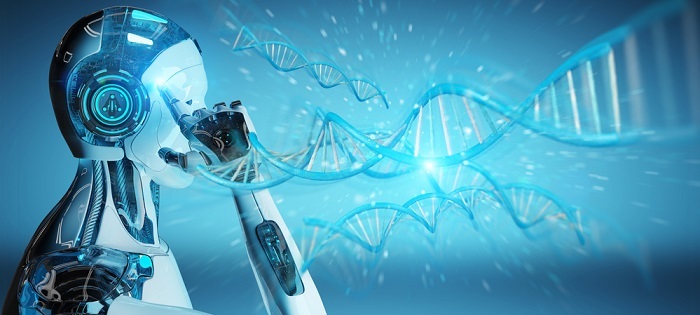
 Data Structure
Data Structure Networking
Networking RDBMS
RDBMS Operating System
Operating System Java
Java MS Excel
MS Excel iOS
iOS HTML
HTML CSS
CSS Android
Android Python
Python C Programming
C Programming C++
C++ C#
C# MongoDB
MongoDB MySQL
MySQL Javascript
Javascript PHP
PHP
- Selected Reading
- UPSC IAS Exams Notes
- Developer's Best Practices
- Questions and Answers
- Effective Resume Writing
- HR Interview Questions
- Computer Glossary
- Who is Who
Human Artificial Chromosome (HAC)
Introduction
Human artificial chromosomes (HACs) are engineered chromosomes created in the laboratory by scientists. They have a wide range of potential applications in the fields of gene therapy, synthetic biology, and biotechnology. In this article, we will discuss the basics of HACs, their construction, and their potential applications.

What are Human Artificial Chromosomes (HACs) Human artificial chromosomes (HACs) are human chromosomes that have been artificially created by scientists in the laboratory. These chromosomes are designed to mimic the structure and behaviour of natural chromosomes, and they contain all the essential elements required for chromosome function. HACs can be used to study various aspects of chromosome biology, and they have potential applications in gene therapy and synthetic biology.
Construction of HACs the construction of HACs involves the assembly of a variety of DNA elements into a functional chromosome structure. These elements typically include a centromere, telomeres, and origins of replication. Centromeres are essential for the proper segregation of chromosomes during cell division, while telomeres protect the ends of chromosomes from degradation. Origins of replication are necessary for the duplication of chromosomes during cell division.
HACs are typically constructed using one of two methods: de novo assembly or modification of existing chromosomes. De novo assembly involves the creation of a chromosome from scratch using synthetic DNA fragments. Modification of existing chromosomes involves the modification of an existing chromosome to create a HAC.
Potential Applications
HACs have a wide range of potential applications in various fields, including gene therapy, synthetic biology, and biotechnology. One of the most promising applications of HACs is in the field of gene therapy. HACs can be used to deliver therapeutic genes to cells, providing a potential cure for a variety of genetic disorders.
Another potential application of HACs is in synthetic biology. HACs can be used as a platform for the creation of synthetic organisms with novel properties. For example, HACs can be used to create organisms that can perform specific functions, such as producing a particular protein or breaking down a specific pollutant.
In biotechnology, HACs can be used to produce large quantities of therapeutic proteins for medical use. HACs can also be used to create animal models of human diseases, allowing scientists to study the disease and develop new treatments.
Challenges and Limitations
HACs Despite their potential applications, HACs also present significant challenges and limitations. One of the biggest challenges in the construction of HACs is the difficulty in achieving stable chromosome assembly. HACs are prone to fragmentation and instability, which can lead to loss of the genetic material.
Another challenge is the potential for HACs to disrupt the normal functioning of natural chromosomes. HACs can compete with natural chromosomes for resources within the cell, potentially leading to cell death or cancer.
Conclusion
Human artificial chromosomes (HACs) are engineered chromosomes that have the potential for a wide range of applications in various fields, including gene therapy, synthetic biology, and biotechnology. The construction of HACs involves the assembly of a variety of DNA elements into a functional chromosome structure, and their potential applications are numerous. However, the challenges and limitations of HACs must also be considered, including their potential to disrupt normal chromosome function and the difficulty in achieving stable chromosome assembly.
FAQs
Q1. What is the difference between a natural chromosome and a HAC?
Ans. A natural chromosome is a chromosome that occurs naturally in an organism's genome, while a HAC is an engineered chromosome created in the laboratory by scientists. HACs are designed to mimic the structure and behavior of natural chromosomes, but they are created using synthetic DNA fragments and other elements.
Q2. What are the potential applications of HACs?
Ans. HACs have a wide range of potential applications in various fields, including gene therapy, synthetic biology, and biotechnology. They can be used to deliver therapeutic genes to cells, create synthetic organisms with novel properties, and produce large quantities of therapeutic proteins for medical use. HACs can also be used to create animal models of human diseases, allowing scientists to study the disease and develop new treatments.
Q3. How are HACs constructed?
Ans. HACs can be constructed using one of two methods: de novo assembly or modification of existing chromosomes. De novo assembly involves the creation of a chromosome from scratch using synthetic DNA fragments, while modification of existing chromosomes involves the modification of an existing chromosome to create a HAC. HACs typically contain a centromere, telomeres, and origins of replication, which are essential for chromosome function.
Q4. What are the challenges and limitations of HACs?
Ans. One of the biggest challenges in the construction of HACs is the difficulty in achieving stable chromosome assembly. HACs are prone to fragmentation and instability, which can lead to loss of the genetic material. Another challenge is the potential for HACs to disrupt the normal functioning of natural chromosomes. HACs can compete with natural chromosomes for resources within the cell, potentially leading to cell death or cancer.

